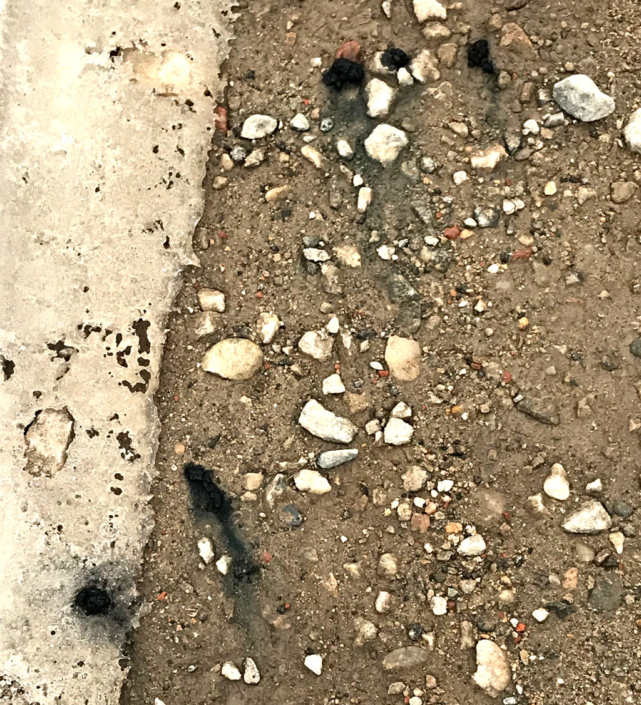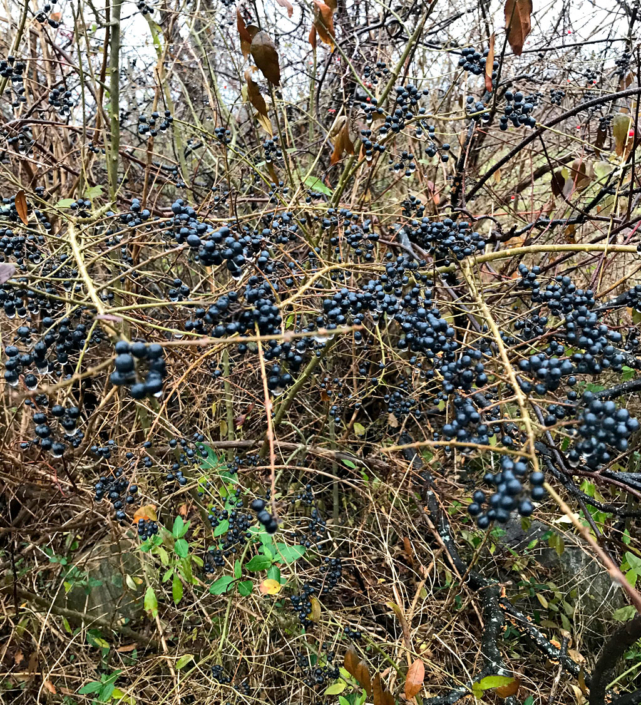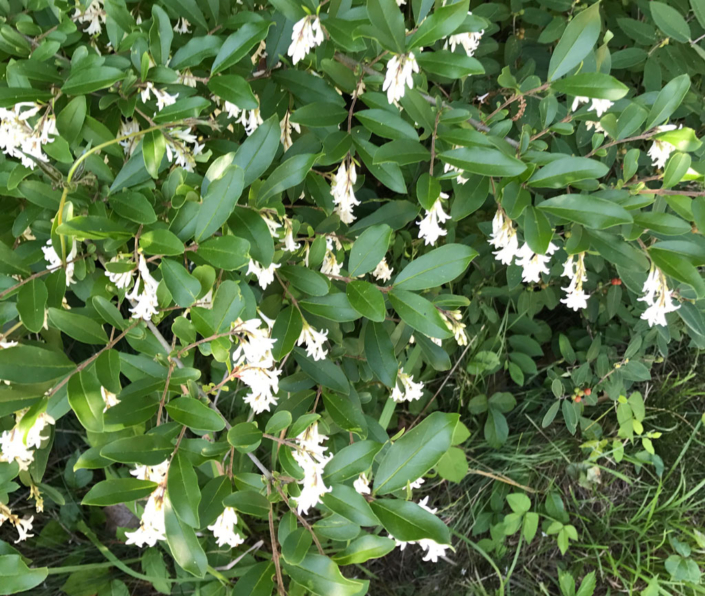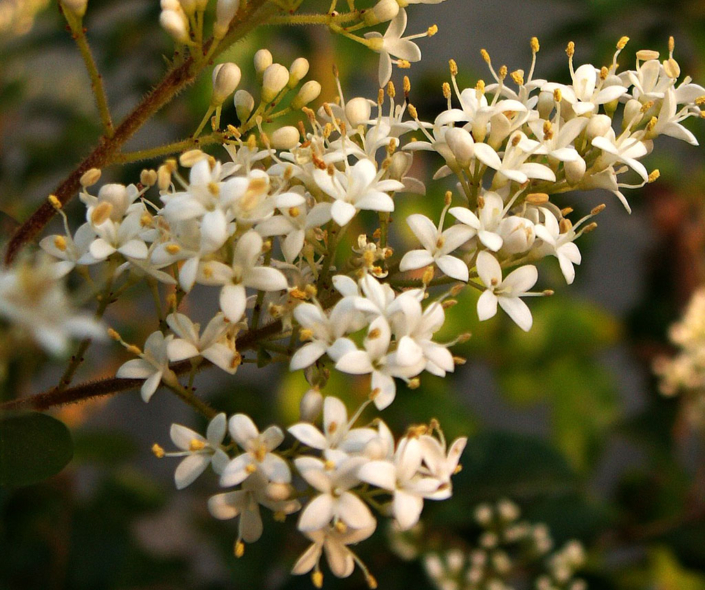Robins Are Unwitting Enablers of Wildly Invasive Chinese Privet Shrub
Blurry black images (l) are winter robins regurgitating and dispersing seeds of highly invasive Chinese privet shrub, Feb. 13 (r). Tom Sargent Photos
Robins, the first signs of spring, actually spend winters in the north, if food sources are plentiful. On Fishers Island, that is not a problem. There is a seemingly endless supply of fat berries that carpet invasive Chinese privet shrubs in winter.
Notorious for producing dense thickets, the Chinese privet, found throughout Fishers Island, is choking out native plants that provide food for native insects, which in turn provide food for bird hatchlings.
Ironically, the robins pictured above are spreading the very seeds that can lead to fewer insects needed to feed their young. The robins are regurgitating Chinese privet berries, which are filled with seeds, further spreading growth of the wildly invasive Chinese privet, known for its aggressive growth, prolific root and stump sprouting, copious seed production, and widespread seed dispersal by birds.
The robin has a long and especially stretchy esophagus, so it can store many berries quickly. After some preliminary digestion, it regurgitates the seeds, making more room for more berries. Robins also can consume huge quantities of berries before nightfall in winter, allowing them to survive cold temperatures until they can eat again at daybreak.
In addition to the privet’s impact on natural landscapes, its blue berries are toxic to humans (and dogs) and can cause symptoms such as nausea, headache, abdominal pain, vomiting, diarrhea, weakness and low blood pressure.
Chinese Privet was introduced into the United States in the 1800s as an ornamental plant primarily used as a privacy hedge. Privet usually grows from 5 to 12 feet but can grow as tall as 30 feet.
Check elongated leaf (l) and shape of flower (r) when identifying Chinese privet in bloom.



